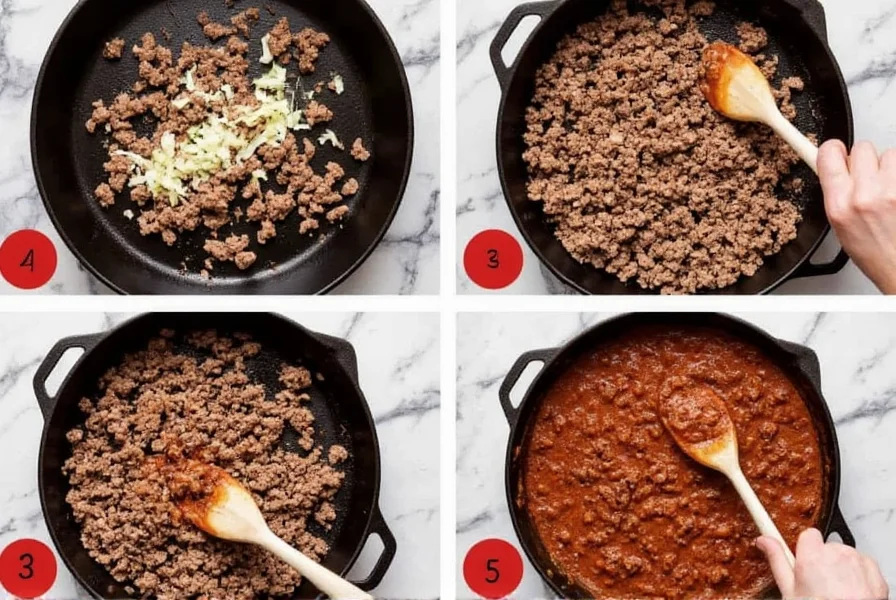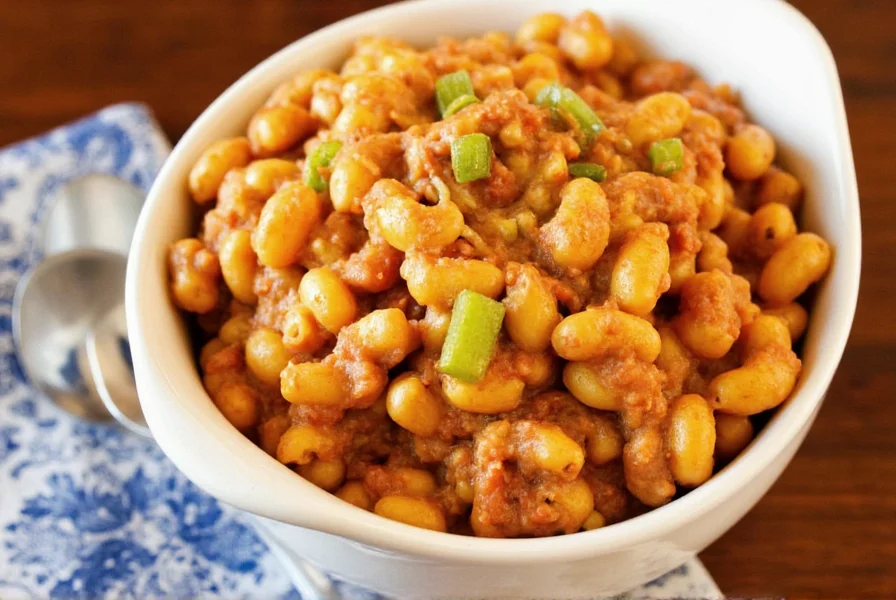Nothing beats the warmth and satisfaction of a steaming bowl of homemade chili mac, especially when prepared with care and quality ingredients. This beloved American comfort food fusion brings together two favorites—creamy macaroni and cheese and robust chili—in one satisfying dish. Unlike canned versions or restaurant renditions that often contain preservatives or excessive sodium, preparing chili mac from scratch allows complete control over ingredients, flavor profiles, and nutritional content.
Essential Ingredients for Authentic Homemade Chili Mac
The foundation of exceptional homemade chili macaroni lies in selecting quality ingredients and understanding their roles in building complex flavors. For the best results, gather these components before beginning your cooking process:
- 1 pound ground beef (or plant-based ground alternative for vegetarian chili mac)
- 2 cups cooked elbow macaroni (slightly undercooked for perfect texture)
- 1 (15oz) can kidney beans, drained and rinsed
- 1 (28oz) can crushed tomatoes
- 1 (15oz) can tomato sauce
- 1 medium yellow onion, finely diced
- 3 cloves garlic, minced
- 2 tablespoons chili powder
- 1 teaspoon smoked paprika
- 1 teaspoon cumin
- ½ teaspoon cayenne pepper (adjust to taste)
- Salt and freshly ground black pepper to taste
- Optional: shredded cheddar cheese for topping
When selecting ingredients for your from-scratch chili mac recipe, prioritize fresh aromatics and quality canned goods. The type of ground meat significantly impacts flavor—90% lean beef provides ideal fat content for developing rich fond while cooking. For authentic homemade chili mac texture, choose small tube pasta like elbows that hold the thick chili sauce effectively.

Step-by-Step Preparation Guide
Follow these detailed instructions to create restaurant-quality homemade chili mac in your own kitchen. This foolproof method ensures perfectly textured pasta and deeply flavored chili every time.
- Brown the meat: In a large Dutch oven or heavy-bottomed pot over medium-high heat, cook ground beef with diced onions until browned (about 8 minutes). Drain excess fat while preserving flavorful fond.
- Add aromatics: Stir in minced garlic and cook for 1 minute until fragrant, being careful not to burn.
- Build the chili base: Add crushed tomatoes, tomato sauce, kidney beans, chili powder, smoked paprika, cumin, and cayenne. Stir thoroughly to combine.
- Simmer: Reduce heat to low, cover partially, and simmer for 25 minutes to develop flavors.
- Prepare pasta: While chili simmers, cook macaroni in salted boiling water until al dente (1-2 minutes less than package directions).
- Combine: Drain pasta and add to chili mixture. Stir gently to incorporate without breaking pasta.
- Final simmer: Cook uncovered for 5-7 minutes until pasta absorbs some chili liquid and reaches ideal texture.
- Season: Adjust salt, pepper, and spices to taste before serving.
Common Mistakes to Avoid in Homemade Chili Mac Preparation
Even experienced home cooks can encounter challenges when preparing this classic comfort food. Understanding these pitfalls ensures consistent success with your chili mac recipe from scratch.
| Mistake | Consequence | Solution |
|---|---|---|
| Overcooking pasta before adding to chili | Mushy texture throughout dish | Cook pasta al dente and finish cooking in chili sauce |
| Using pre-shredded cheese | Grainy texture when melted | Shred block cheese yourself for smooth melting |
| Rushing the simmer time | Underdeveloped flavors | Allow minimum 25-minute simmer for flavor integration |
Customization Options for Your Homemade Chili Mac
One of the greatest advantages of preparing chili mac from scratch is the ability to customize according to dietary needs and flavor preferences. Consider these popular variations when making your next batch of homemade chili macaroni:
Vegetarian chili mac: Substitute ground beef with plant-based crumbles or extra beans. Add diced mushrooms for meaty texture and umami flavor. Use vegetable broth instead of beef drippings when building your chili base.
Gluten-free chili mac: Replace traditional elbow macaroni with high-quality gluten-free pasta. Cook separately and add during the final simmer to prevent disintegration. Be mindful that gluten-free pasta often requires different cooking times.
Spicy chipotle variation: Add 1-2 canned chipotle peppers in adobo sauce when building your chili base. The smoky heat complements the traditional chili spices beautifully. Start with one pepper and adjust to your heat tolerance.
Creamy cheese sauce option: For a richer texture reminiscent of classic mac and cheese, create a simple cheese sauce with milk, butter, and shredded cheddar. Stir into the finished chili mac just before serving for ultimate comfort food indulgence.

Serving and Storage Recommendations
Homemade chili mac achieves its best flavor when served immediately after preparation, allowing the pasta to maintain ideal texture. For optimal presentation and enjoyment:
- Serve in pre-warmed bowls to maintain temperature
- Top with freshly shredded sharp cheddar cheese that melts into the hot dish
- Garnish with chopped fresh parsley or green onions for color contrast
- Pair with cornbread or a simple green salad for complete meal
Proper storage ensures your homemade chili mac maintains quality for future meals. Cool completely before transferring to airtight containers. Refrigerate for up to 4 days or freeze for up to 3 months. When reheating, add a splash of water or broth to restore ideal consistency, as the pasta continues absorbing liquid during storage.
Frequently Asked Questions
Can I make homemade chili mac in a slow cooker?
Yes, you can prepare slow cooker chili mac by browning the meat and sautéing aromatics first, then transferring everything to your slow cooker with uncooked pasta. Cook on low for 4-6 hours, adding the pasta during the last hour to prevent mushiness. This method yields tender results with minimal hands-on time.
How do I prevent my homemade chili mac from becoming too dry?
To maintain ideal moisture in your chili mac recipe from scratch, reserve ½ cup of pasta cooking water before draining. Add this starchy liquid gradually when combining pasta with chili if needed. The starch helps create a silky sauce that clings to the pasta without making the dish watery.
What's the best cheese for topping homemade chili mac?
Sharp cheddar provides the classic flavor pairing with chili mac, but you can create more complex profiles by blending cheeses. Try a combination of sharp cheddar, Monterey Jack, and a small amount of smoked gouda for depth. Always shred cheese yourself from a block for superior melting properties compared to pre-shredded varieties.
Can I prepare homemade chili mac ahead of time for meal prep?
Absolutely. Homemade chili mac makes excellent meal prep as flavors deepen when stored properly. Prepare the dish completely, cool quickly, and store in portion-sized containers. When reheating, add a tablespoon of water to each portion and heat gently to preserve texture. The dish typically improves in flavor after 24 hours as ingredients meld together.











 浙公网安备
33010002000092号
浙公网安备
33010002000092号 浙B2-20120091-4
浙B2-20120091-4